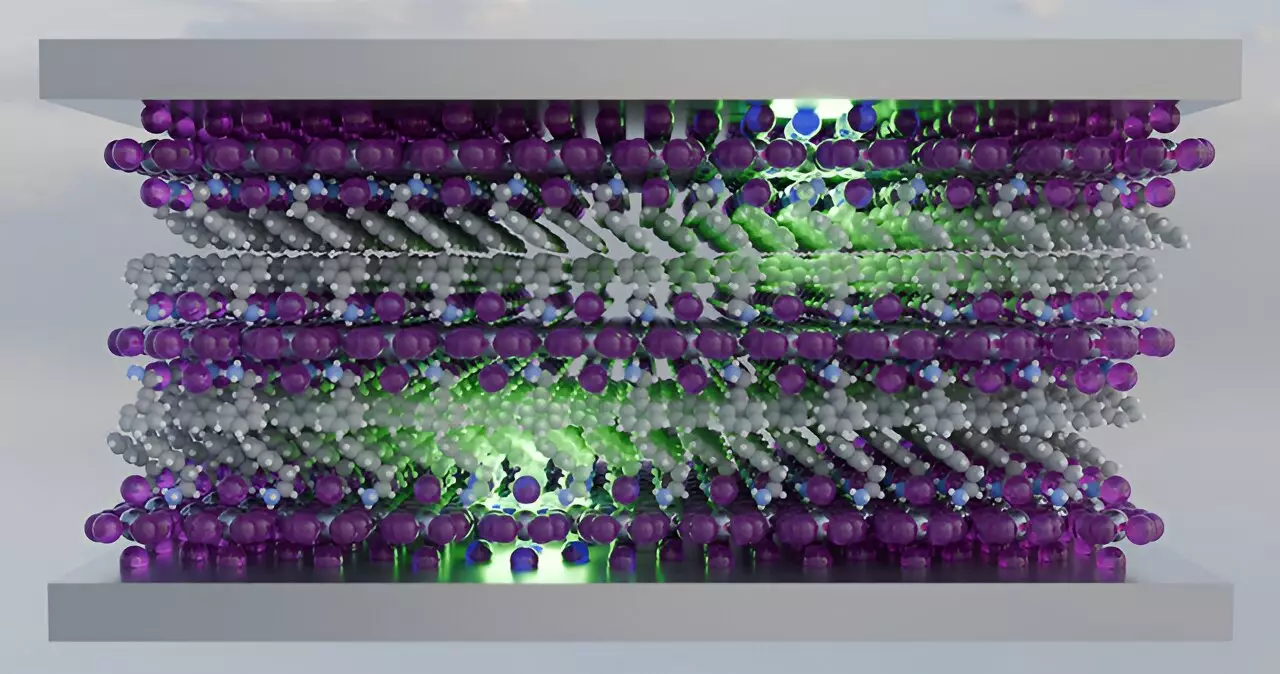In the realm of solar cells and light-emitting diodes, maintaining the excited state kinetics of molecules is a critical challenge. At the heart of this challenge lies the need to balance various processes that can either lead to energy loss or to the desired outcome. One of the major hurdles in achieving high efficiency in these systems is known as exciton-exciton annihilation, a phenomenon that can significantly decrease solar efficiency and light output in LEDs.
Researchers at the National Renewable Energy Laboratory (NREL), in collaboration with the University of Colorado Boulder, have made significant strides in controlling exciton-exciton annihilation. By coupling excitons with cavity polaritons, which are essentially photons trapped between two mirrors, they have been able to combat energy dissipation and potentially increase efficiency in optoelectronic devices.
In a study published in the Journal of Physical Chemistry Letters, the researchers utilized transient absorption spectroscopy to showcase their ability to regulate the loss mechanism by adjusting the distance between the mirrors forming the cavity surrounding the 2D perovskite (PEA)2PbI4 (PEPI) layer. This particular perovskite material is being considered for future LED applications due to its promising characteristics.
According to Jao van de Lagemaat, the chemistry and nanoscience center director at NREL who spearheaded the study, gaining control over exciton-exciton annihilation in the active materials of solar cells and LEDs could lead to a substantial reduction in energy losses and a notable boost in efficiency. The energy exchange between light and matter systems plays a crucial role in this process, with strong coupling between photonic and electronic states resulting in the formation of polaritons, which are hybrid states of light and matter.
The researchers achieved ultrastrong coupling of the PEPI layer within a Fabry-Pérot microcavity composed of two partially-reflective mirrors. By increasing the coupling strength, they were able to extend the lifetime of the excited state and gain control over exciton-exciton annihilation, decreasing the loss process significantly. This was attributed to the quantum nature of the hybrid states, where polaritons swiftly transition between being more photonic or more excitonic in nature.
Rao Fei, a graduate student from the University of Colorado Boulder involved in the study, highlighted the transformative impact of a seemingly simple experiment of placing a material between two mirrors, which completely altered its dynamics. By leveraging strong coupling effects, the researchers demonstrated the potential to manipulate the excited state dynamics of the PEPI system, offering a new avenue for enhancing the efficiency of solar cells and LEDs.
The ability to control exciton-exciton annihilation through innovative approaches such as coupling excitons with cavity polaritons marks a significant advancement in the field of optoelectronics. The findings of this study hold the promise of unlocking new strategies for maximizing efficiency and minimizing energy losses in solar cells and light-emitting diodes, paving the way for a brighter and more sustainable future.


Leave a Reply